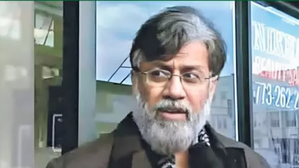The European Championship is being held in 11 different cities in 10 different countries. The images we are seeing on our television or computer screens seem strange to many — 18 months into the pandemic: Crowds in confined spaces spreading aerosols through their chanting, thousands of people not wearing masks.
What impact will the first major sporting event to be held with large crowds of spectators in the stands have on the third wave of the pandemic, which is only now subsiding? Our fact check provides the initial answers.
At some EURO 2020 matches, fans were screened in advance after positive COVID-19 rapid tests; at others, spectators tested positive for the virus after the fact. In Denmark, spectators tested positive for the delta variant after the match between the hosts and Belgium. The authorities then advised 4,000 spectators from certain stadium blocks to get a PCR test. In Budapest, a French family are reported to have tested positive after France’s match against Hungary. By far the most COVID-19 cases were reported after Finland’s match against Belgium, which took place in St. Petersburg. According to Finnish media, at least 86 infections were detected in people returning home from Russia. In most cases, it is unclear whether they were infected in the stadium itself or elsewhere, like during travel to and from the match.
Experts agree that the chance of contracting COVID-19 at outdoor events is relatively low as fresh air dilutes aerosols — it’s the airborne particles produced by breathing and talking that carry the virus. But only if the minimum personal distancing from others is maintained.
William Schaffner, professor of infectious diseases at Vanderbilt University in the United States, also points out that stadium attendance during Euro 2020 in and of itself poses a very low risk of infection, provided safety measures such as limiting the number of spectators are observed. However, the measures vary from one European Championship venue to another. In Budapest, they have been filling the Ferenc Puskas Stadium to capacity, but spectators need to provide a negative PCR test to be admitted. In Glasgow, Hampden Park has only been 25% full, but spectators have not been required to provide a PCR test.
According to German aerosols researcher Gerhard Scheuch, dangers lurk in football stadiums — particularly in often poorly ventilated boxes, elevators and restrooms.
“If an infected person exhales the virus there, the aerosols linger for a relatively long time,” he said. Most problematic, according to Scheuch and Schaffner, is what happens before and after a game; tens of thousands of fans use buses, trains and planes to get to and from the stadium. They stay overnight in hotels and may want to party in bars after a game. What about the fact that many aren’t adhering to the requirement to wear a mask?
Scientific studies show that mask-wearing is a critical factor in preventing outbreaks. According to an unpublished study obtained by DW from the RWI Leibniz Institute for Economic Research and the SDU University of Southern Denmark in Sonderborg, Bundesliga matches with large crowds led to a significant increase in new infections. This was particularly the case when masks only had to be worn on the way to stadium seats, but not in the fan block. Sporting events with a high number of spectators “pose an increased risk of infection,” says the author of the study, Philipp Breidenbach. The researchers recorded an increase in local infection rates of about 7-8% after the Bundesliga matches studied. The results are clear evidence of how important it is to wear a mask and maintain personal distancing rules when attending events, the study says.
Schaffner agrees: “Masks are not perfect. But they do provide some protection if everybody is yelling around you in a soccer game.” The first half of the European Championship has already shown that the specified minimum distance in the arenas is not being observed. In Copenhagen, Munich, Budapest, and other venues, many fans stood and sat close together.






















